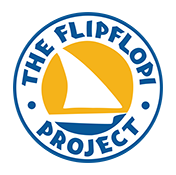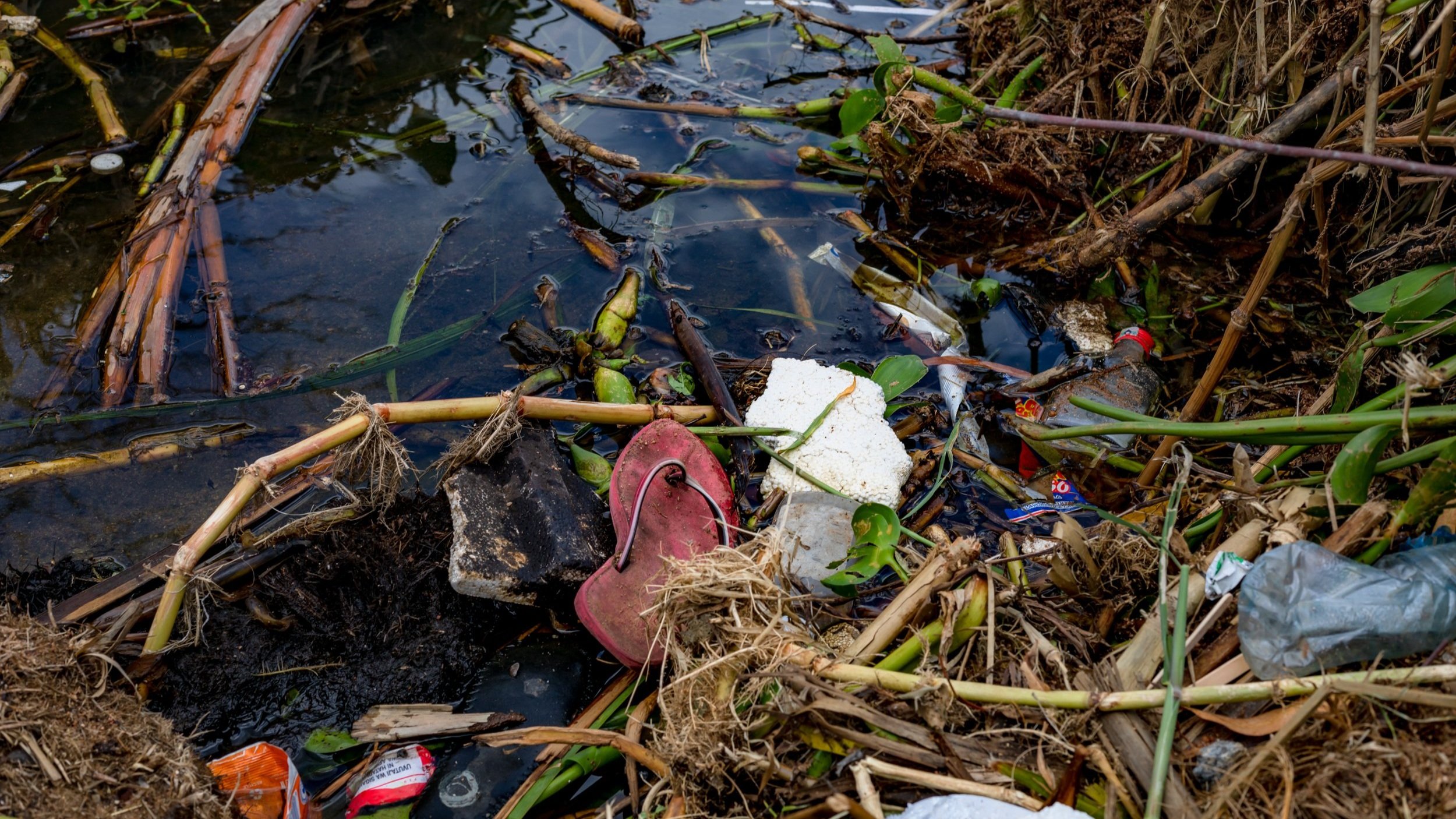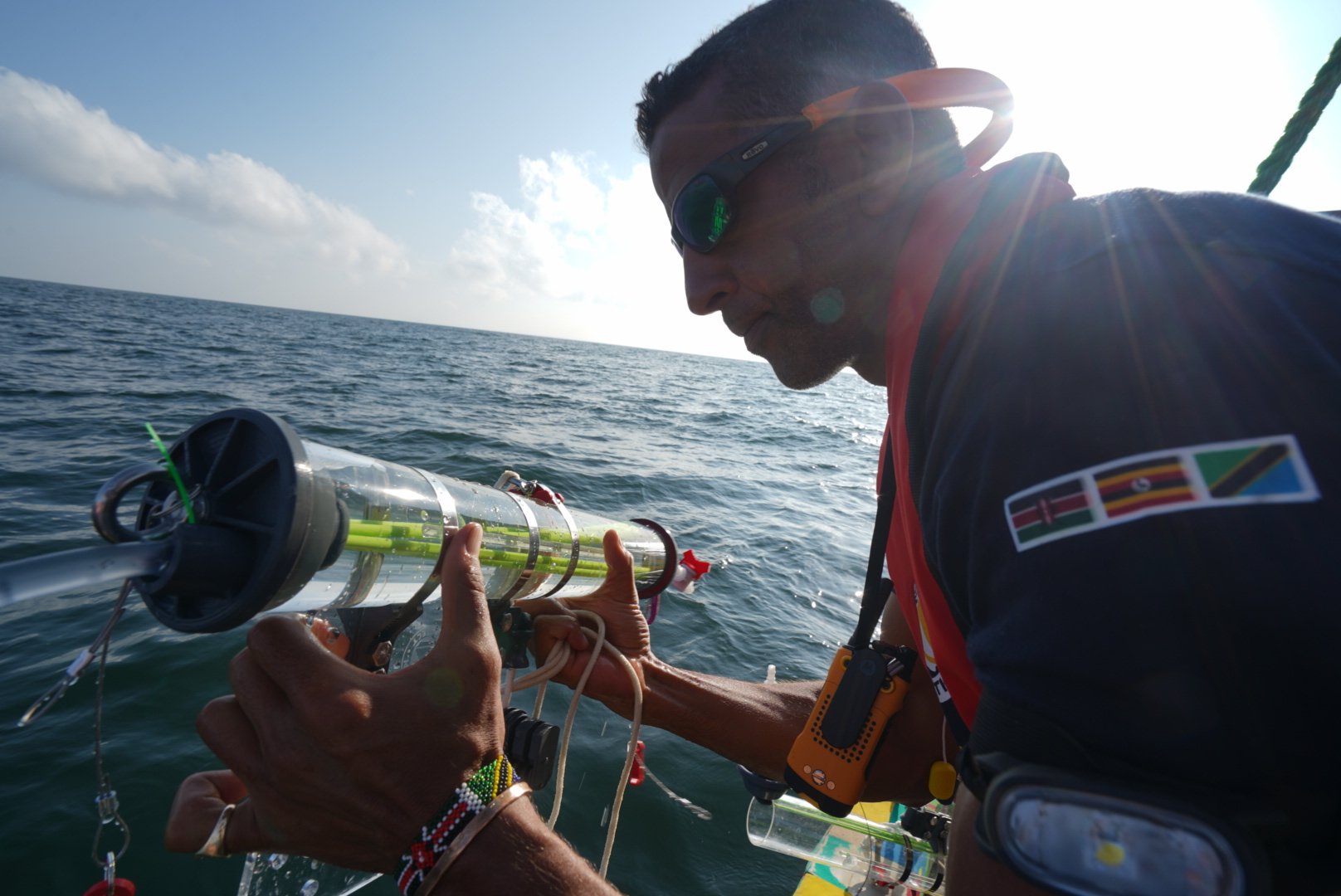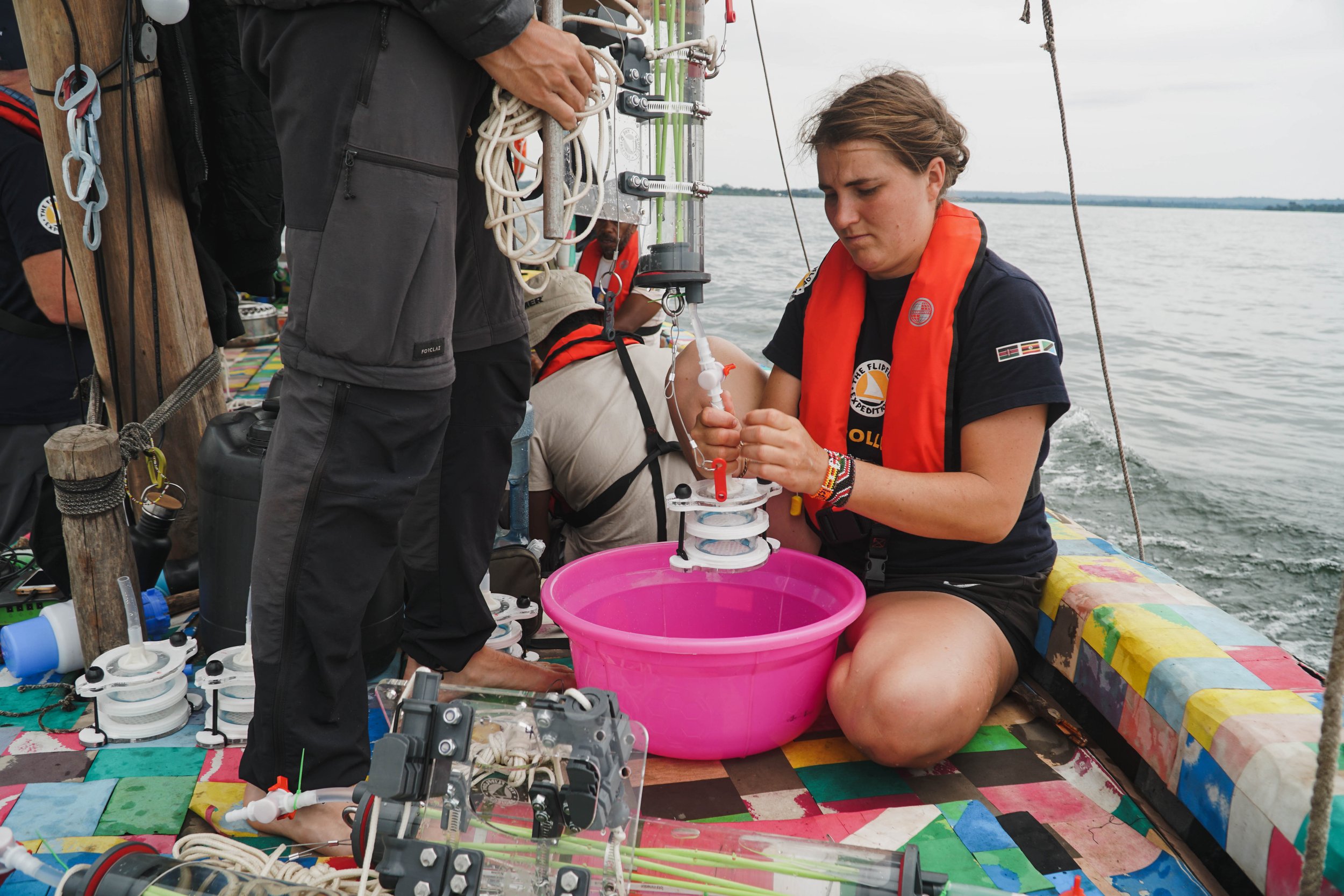Microplastics found in 100% of locations in Lake Victoria: Results just in
One year ago, Flipflopi had completed her 2nd expedition circumnavigating Africa's largest freshwater lake, Lake Victoria, to bring awareness to the devastating impact of pollution on a lake that supports an estimated 40 million people living across 3 countries - Uganda, Tanzania, and Kenya. The largest tropical lake in the world and the world’s second-largest freshwater lake, it covers a massive 68,800km2.
When fish swallow plastics, they are unable to break down and ingest them. Their guts fill up until they feel ‘full’ all the time. Eventually, they stop eating and die of starvation even though their stomachs are full.
Beyond that, the presence of microplastics in Lake Victoria has large implications for water quality and safety. That’s because microplastics are excellent carriers of the many harmful pollutants and chemicals that are already present in the environment. This could lead to more serious effects on the entire community as the fish ingest other harmful pollutants such as metals, runoff from petrol, diesel and other fossil fuels, that could lower fish productivity and affect food safety in the long term. (Rochman et al., 2013).
The depleting fish stocks of Lake Victoria are already apparent to people living by the lake, and the risk to the livelihoods of hundreds of thousands of people who depend on the fisheries increases daily.
Lake Victoria
is known as the largest freshwater fishery in the world. Yet, like so many other critical ecosystems it faces multiple threats including overfishing, deforestation and water pollution.
Microplastic survey on board The Flipflopi Dhow
On board the recycled plastic dhow during the expedition was a scientist from the University of Dar es Salaam, Bahati Mayoma, leading an investigative study into microplastics from the surface to the deep waters of the Lake.
There are very few studies exploring the extent and impact of plastic pollution on the lake – especially microplastics or understanding the depth of the waters these pollutants can reach.
Preliminary results from the surface waters: Microplastics found in 100% of locations in the lake
During the expedition, the team from Dar es Salaam collected 13 samples from different locations in Ugandan, Kenyan and Tanzanian waters of Lake Victoria using a specially-designed manta trawl made by Simon Scott Harden from University of Northumbria that was towed behind Flipflopi. A total of 29,053 particles measuring between > 5mm to 0.33mm were recovered from water samples taken from all selected sites.
Samples were first treated and then investigated in the laboratory, and the particle abundance per square kilometer calculated.
The surface water results showed that microplastics (MPs) are present in all parts of Lake Victoria regardless of locality and national boundaries.
Types and source of microplastics found
Fragments constituted 68% of overall microplastics (MPs) recorded followed by fibers (31.4%) whereas foam and film together constituted less than 1% of the total particles. Understanding the shape and type of plastic particles helps to assess the likelihood of negative interactions between MPs and aquatic species and sources.
For instance, the filament nature of fibers increases the chances of being trapped by filters feeding organisms. Likewise, fragments, some of which resemble food items, are likely to be ingested by various species including fish we depend on for food (Bignangwa et al., 2016, Khan et al., 2020).
The source of plastic fragments found could be linked to various domestic items such as buckets, bowls, bottles, single use bags and tarpaulin sheets which are used for roofing of fishing camps in remote Islands. Fibers which formed the second most abundant of particles found could be linked to fishing and textile related activities (Gaylarde et al., 2021). The laundry of nylon and polyester clothes as well as prolonged use of old fishing gear such as nets and ropes may release substantial amounts of fibers into aquatic environments.
What are the implications of these preliminary results?
The presence of MPs even in waters of remote islands like Bulago island - which is located within an ecological lacustrine reserve - highlights the high risk of ingestion by species that people depend on for food.
The high presence of fibres from fishing gear and synthetic fibers from clothes highlights the need to engage fishing communities in more circular solutions to address this growing problem.
Sadly, microplastics (MPs) were found to be present in every part of Lake Victoria regardless of locality or national boundaries. And the quantities will continue increasing so long as there are no joint measures between member states and communities to address the problem.
The solution?
Whilst the long terms effects of microplastics on human health are unknown, there is no doubt that the presence of plastics in our waterways is extremely alarming. Drastic measures must be taken including substantial investment in better waste management practices upstream as well as on the shores of the Lake Victoria if we are going to reduce the flow of plastics into our waterways.
Continuous community awareness and enabling initiatives around circular economy solutions will also be fundamental in managing the problem, especially in lake-dwelling communities and the fishing industry.
And as initiatives to embed circular economies take off globally and innovative alternatives are being developed, we can immediately start to reduce the flow of plastics by taking further legislative action to ban and enforce the production, sale and importation of specific and unnecessary single use plastics - but this will only have impact if it is done on a regional basis. Lake Victoria is a shared ecosystem and requires collective regional responsibility.
As one step forward, together with our partners at the Africa Legal Network and community based organisations across East Africa, we are calling for regional consensus in the banning of all unnecessary single-use plastic: Lake Victoria is symbolic of the problems that occur without such regional collaborations and legislation.
Sign the petition !
We are calling on you all to join Flipflopi and our Lake Victoria community partners this June to protect our #onlyoneearth, and #onlyonelake – by signing the petition, we may one day hope to stop the flow of this catastrophic material threatening our beautiful ecosystems and lives
A note about the study.
The sampling methodology and equipment used was designed and developed by Simon Scott-Harden from University of Northumbria and supported with data collection and analysis led by Bahati Mayoma from University of Dar es Salaam.
These are preliminary study results and focus on the surface waters only. During the expedition samples were also collected in the depths of the lake. Results from these first-of-its-kind data are currently being analyzed and will be published soon.
References:
Biginagwa, F. J., Mayoma, B. S., Shashoua, Y., Syberg, K., Khan, F. R. (2016). First evidence of microplastics in the African Great Lakes: Recovery from Lake Victoria Nile perch and Nile tilapia. J. Great Lakes Res.42: 146-149. https://doi:10.1016/j.jglr.2015.10.012
Gaylarde, C., Baptista-Neto, J.A., da Fonseca, E.M., 2021. Plastic microfibre pollution: how important is clothes’ laundering? Heliyon 7, e07105. https://doi.org/10.1016/ j.heliyon.2021.e07105
Khan, F. R., Shashoua, Y., Crawford, A., Drury, A., Sheppard, K., Stewart, K., & Sculthorp, T. (2020). ‘The Plastic Nile’: First evidence of microplastic contamination in fish from the Nile River (Cairo, Egypt. Toxics, 8, 22. https://doi.org/10.3390/toxics8020022
A note about the expedition
Over a four week period in March and April 2021, the now well known world's first recycled plastic sailing dhow - the Flipflopi - accompanied by a team of 20+ people, led major events across three countries (Kenya, Tanzania and Uganda) meeting business leaders, community leaders, conservationists, policy-makers, academics and school children, in order to highlight the impact of plastic pollution on the lake and other environmental challenges it faces, and what we can all do about it. The expedition was supported by a number of partners including UKAID, AFD, UNEP, Anjarwalla and Khanna, UNLive and others. To read the full report, click HERE.






